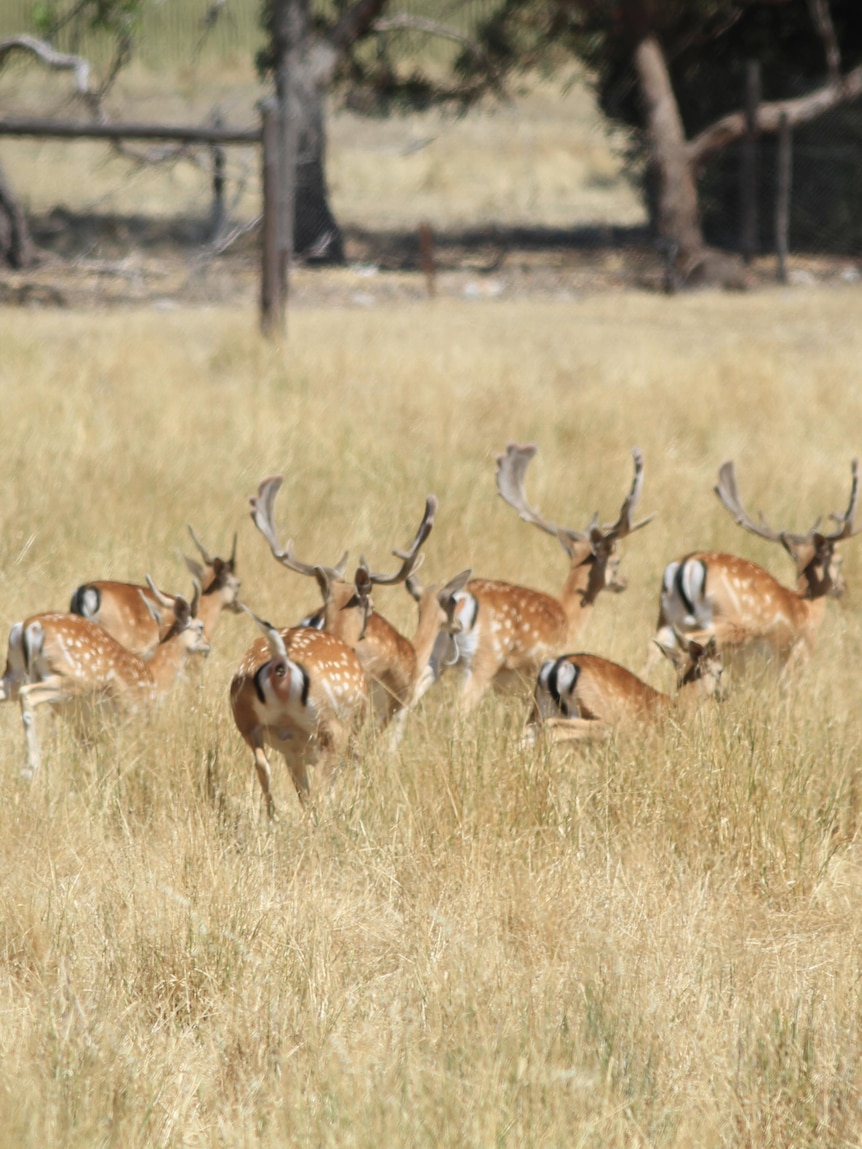South Australian deer hunters have again raised animal cruelty concerns about the state government’s aerial deer culling program, releasing a video of an injured animal.
Warning: This article contains images and footage some readers may find distressing.
Mount Gambier deer hunter Jake Nicholson published a video showing a fawn still alive after being shot multiple times in the body.
But the Limestone Coast Landscape Board has cast doubt on whether it was wounded as part of its deer-culling program.
Mr Nicholson published the video online after being sent it by another hunter, Justin Meek, who said he found the young deer last Sunday among a herd that had been shot on a property near Kingston South East.
Mr Nicholson and Mr Meek believed the deer had been shot two days earlier when helicopters contracted to the Limestone Coast Landscape Board were on the property shooting deer with shotguns.
Landscape board general manager Steve Bourne said there was “some evidence” in the video and other related photos that the deer had not been shot as part of the aerial culling program.
He did not specify what the evidence was.
He said there had been no evidence presented to show the deer had remained alive after being shot in the aerial culling program.
“That’s why we’d be very keen to investigate this,” he said.
“I will point out that in the last two-and-a-bit years of this program, we’ve removed 15,000 deer across the state — more than two-thirds of those are in our region.
“We have not been provided with any credible evidence of any animal left injured in all of that time.”
He said hunters, on another occasion, had claimed a deer was left alive after being killed with a shotgun from a helicopter but only rifles were being used at that time.
Hunters sickened by find
The South Australian government plans to eradicate all feral deer in the state by 2032, mostly by shooting them from helicopters with the aid of thermal imaging.
A Flinders University study published last year found all the deer that researchers cut open after an aerial cull had been fatally shot in the lungs or heart.
Mr Nicholson, who has been leading a campaign against the aerial culling program, said it was clear the fawn had been immobile for some time after being shot.
“You can see signs of struggle where the animal’s feet have been moving in the sand and it’s basically started to dig, not been able to move but has been sort of pushing around on himself,” he said.
“You can see where it’s been thrashing around and it’s got sand on its coat and on its head and that sort of thing, bits of blood and stuff around the animal — pretty confronting.”
Mr Meek, from Millicent, said he cut the deer’s throat after filming it.
“Honestly, it made me sick,” he said.
“Already, it’s not something you want to see walking out around the bush and farmland — multiple dead carcasses and then to see something like that it makes you sick inside.”
He said he filmed it to prove what hunters had told each other about it but had no evidence of.
“Without something like this being seen, I feel people are accepting of it,” he said.
RSPCA SA head of animal welfare Andrea Lewis said the organisation “has not been provided with evidence to suggest that the government’s aerial culling program has left deer live and wounded”.
Helicopter hunting ‘quick’
Another video shows a group of deer being chased for a minute by a helicopter on the same property as where the fawn was found.
Mr Bourne said he was not concerned about the time taken to shoot them all.
“One every 15 seconds is very quick,” he said.
Mr Nicholson said the deer’s last moments would have been terrifying.
“As a hunter, nearly all the deer I take are unaware of my presence,” he said.
“So you take your shot, the animal dies instantly, it’s absolutely stress-free, whereas in this scenario, deer are being chased and then shot to death.
“The level of stress that’s being put on that animal before being dispatched would have to be reasonably high.”
Get our local newsletter, delivered free each Friday




